Applications are not just about the front end, which is the part that manages the UI (user interface) or visual appearance and components users can interact with. Rather they are full-stack technology, which is the entirety of a computer systems application, and as part of this technology, you also have the backend, which is the side of the technology that manages databases, servers, APIs, etc.
Handling backend functionalities or infrastructure can be complex and time-consuming; hence, an alternative for managing the backend of an application called BAAS (backend as a service) was developed to make building full-fledged applications faster and more efficient.
What is BAAS? Why was it created, and why do we need it? This concept is what we aim to explain in this article, let’s dive in.
What is BAAS?
When cloud computing emerged in the mid-2000s, it provided scalable infrastructure resources, managed services, and integrations, it paved the way for back-end-as-a-service [BAAS] a far cry away from the traditionally tedious functionalities and complexities involved in building applications.
Baas is a cloud service that provides web app and mobile app developers with ready-made software to build the backend to their frontend applications easily.
It is a cloud service model that handles an application's underground functionality by simplifying and automating backend tasks. BAAS providers have developed software for database management, user authentication, push notifications, and cloud storage, amongst many others.
The idea was to create a service for developers to assign the heavy labor of backend tasks to cloud services. This means that developers didn't have to build a backend from scratch. In short, it’s a ready-to-use solution that provides backend support using software development kits and APIs.
Features of BAAS
Depending on the BAAS platform, the following features may be provided by the vendor and is necessary for most of the apps developers build:
Infrastructure Management: Backend-as-a-service (Baas) platform helps developers with the complexity of managing backend infrastructure. The Baas provider sets up and manages the backend infrastructure such as servers, databases, and networking-related capabilities.
User Authentication: This feature handles authentication and authorization. It allows the integration of authentication methods like OAuth, common email/password systems, etc.
Push Notification: Backend-as-a-service (Baas) platform provides tools for push notifications - which are targeted and personalized messages sent to the user's device.
API Management and Integration: Backend-as-a-service (Baas) platform generated APIs for backend services automatically. API gateways manage requests, and responses, and also support integration with external APIs and third-party services.
Hosting: Baas providers may offer hosting features for developers to deploy and manage web applications.
Geolocation: Baas offers developers who are developing location-aware applications with features that include; location tracking, geo-fencing, location-based querying, and location analytics functionalities.
Analytics and Reporting: Backend-as-a-service has tools for data analysis and visualization- to monitor performance and make data-driven decisions to improve the application or business performance.
Database management: Backend-as-a-service provides a cloud-based database for efficient storage, retrieval, and management of application data. Also, the backend-as-a-service platform provides real-time data streaming and synchronization.
This allows features like real-time chat, real-time notification, and other collaborative functionalities.
Social Media Integration: Baas platforms allow the incorporation of social media functionality like signup, login, content sharing, and data access.
Security: Baas platforms have measures/ resources in compliance with regulatory standards to enhance security, and prevent authorized access to client's applications.
Cloud and File Storage: Backend-as-a-service platform manages file storage using modules for file-sharing management. Baas provider also restores files in case of system failure.
Applications that can implement Backend-as-a-service have functionalities like; vendor and customer profiles, in-app search, list goods and services, user accounts, chats with file sharing and video calling features, comments/reviews features, checkout, delivery options, etc.
These applications may be;
- On-demand services, e.g. e-commerce
- Social network and real-time messaging e.g. discord
- E-commerce apps, and online-stores e.g. eBay
- Productivity Apps e.g. oneNote, Trello
Baas providers support a range of web and mobile frameworks e.g.
- Web framework (e.g. React, Vue, and Angular )
- Mobile development technology e.g. IOS Native( e.g. Swift or Objective -c) and - Android Native (e.g. Java or Kotlin)
- Cross-platform frameworks (e.g. flutter, kotlin )
Importance of BAAS
There are many reasons why BAAS is important and they include;
Development speed: BAAS speeds the development process, which means, there’s less production and maintenance of the code.
Faster release time: BAAS speeds up the development process, which means developers can deliver the product to users faster.
Trust and Efficiency: Developers can rely on the BAAS platform; finding and fixing bugs is much easier, and maintenance and support services are readily available.
Security: BAAS platforms have built-in security features that protect data from being tampered with or exploited by malicious attacks. The BAAS platform has enough resources to enhance security and comply with necessary regulations.
Scalability: BAAS infrastructure is scalable meaning that it was created to adapt to the growth of an application.
Cost-Efficient: Using the BAAS platform for small projects, may not require a full-time developer, which saves on the cost of hiring.
Cross-Platform Management: The BAAS platform allows developers to manage backend services across different platforms- either web or mobile.
Third-Party Integration: BAAS platforms offer third-party integrations meaning that developers can incorporate various functionalities in their applications like; database management, geolocation, authentication, etc.
Limitations of Backend as a Service
Re-occurring cost: Adopting backend-as-a-service may require a subscription fee which is constant as long as the service is required. As the project grows requiring more features, so does the cost of usage.
Reduced Flexibility: Adopting Backend-as-a-service may limit the coding structure of an application. Developers would have to consider the constraints of BAAS platforms when developing an application.
Proprietor lock-in / Vendor Dependency: The developer depends on the provider which means the backend functionality is merged with the vendor's infrastructure and services. If the provider's service is down, it affects the application.
Also, if you’re dissatisfied with the service, it can be strenuous to move or switch providers.
- Limited Customization: Pre-built features and functions can be limiting especially when the application requires distinctive features or functions.
Backend as a Service Platform’s
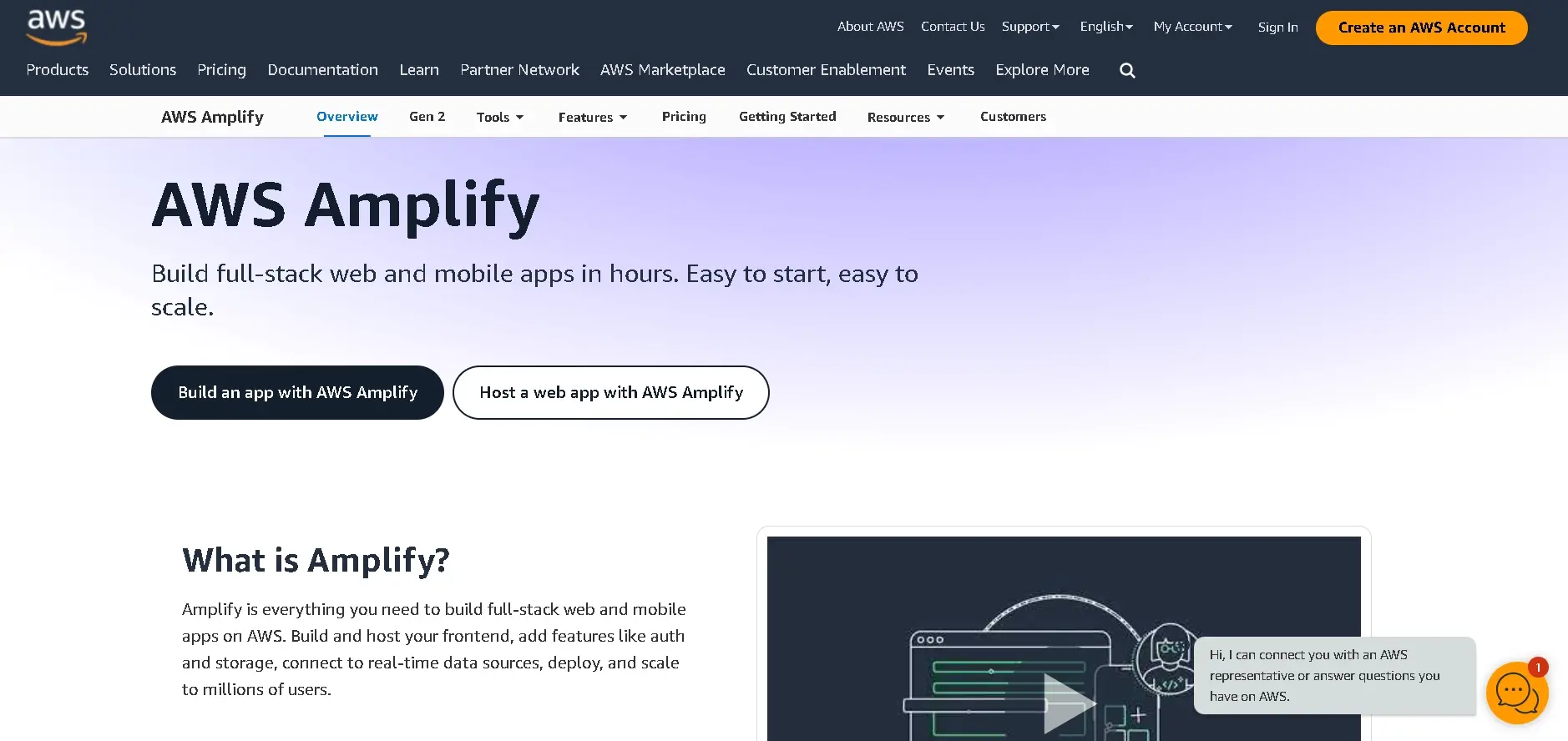
AWS Amplify is a fully managed CI/CD and hosting service for fast, reliable, static, and server-side rendered apps that scale with your business. Users can configure a backend and connect with the front end of their application easily, and build dynamic capabilities using AWS tools like - Amplify UI components, Amplify Studio, etc.
Some features of AWS Amplify include; hosting, real-time database, cloud storage, authentication, analytics, push notifications, etc.
Parse
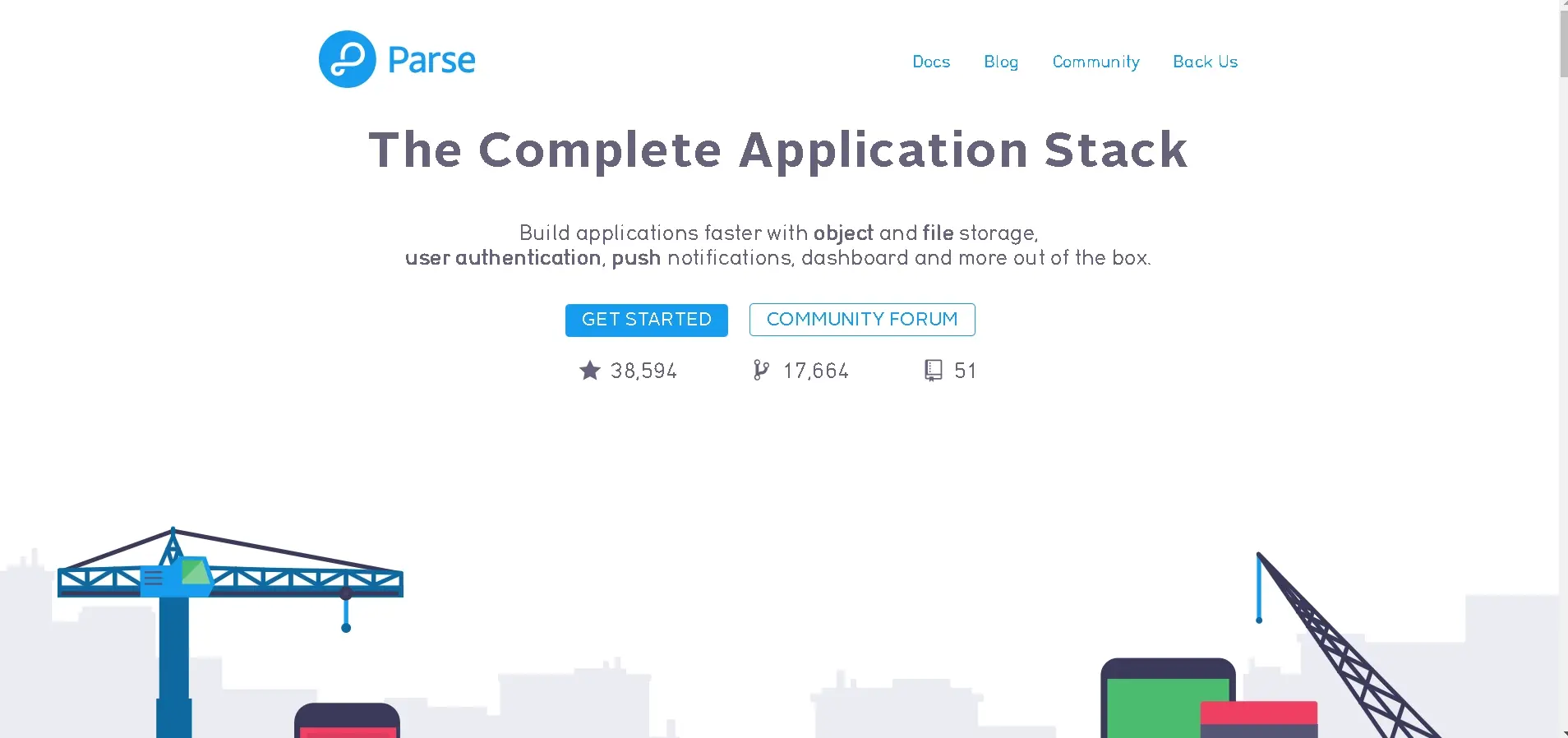
Parse is an open-source BAAS platform that helps developers create and manage server-side functionality. Features of the parse platform include; Database, APIs, authentication, visual dashboard for monitoring, analytics, storage, push notification, etc.
Appwrite
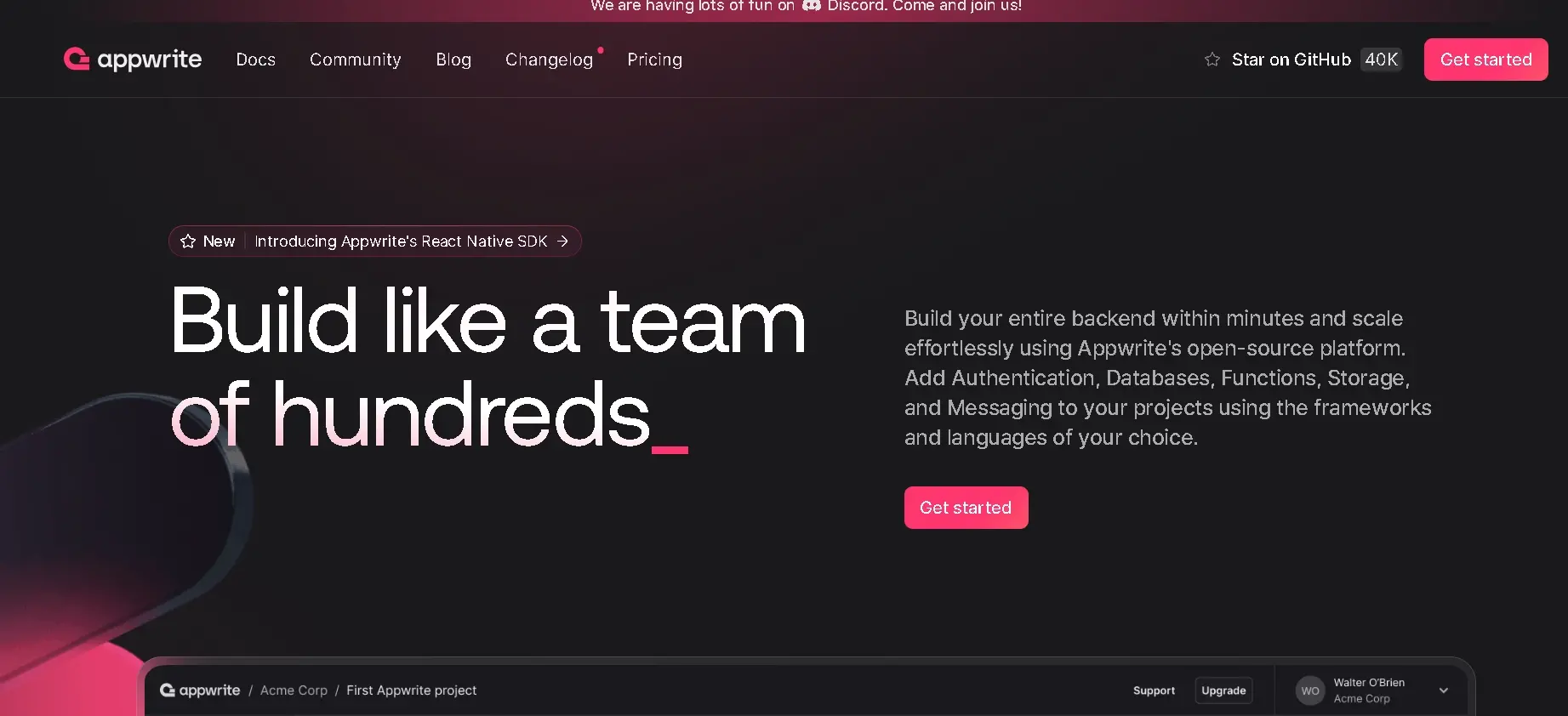
Appwrite is an open-source platform that allows users to build the backend of an application easily. Appwrite provides users with different tools, APIs, and a management console, to help developers build fast and secure applications.
Features of Appwrite include databases, geo, and localization, authentication, storage, etc.
FireBase
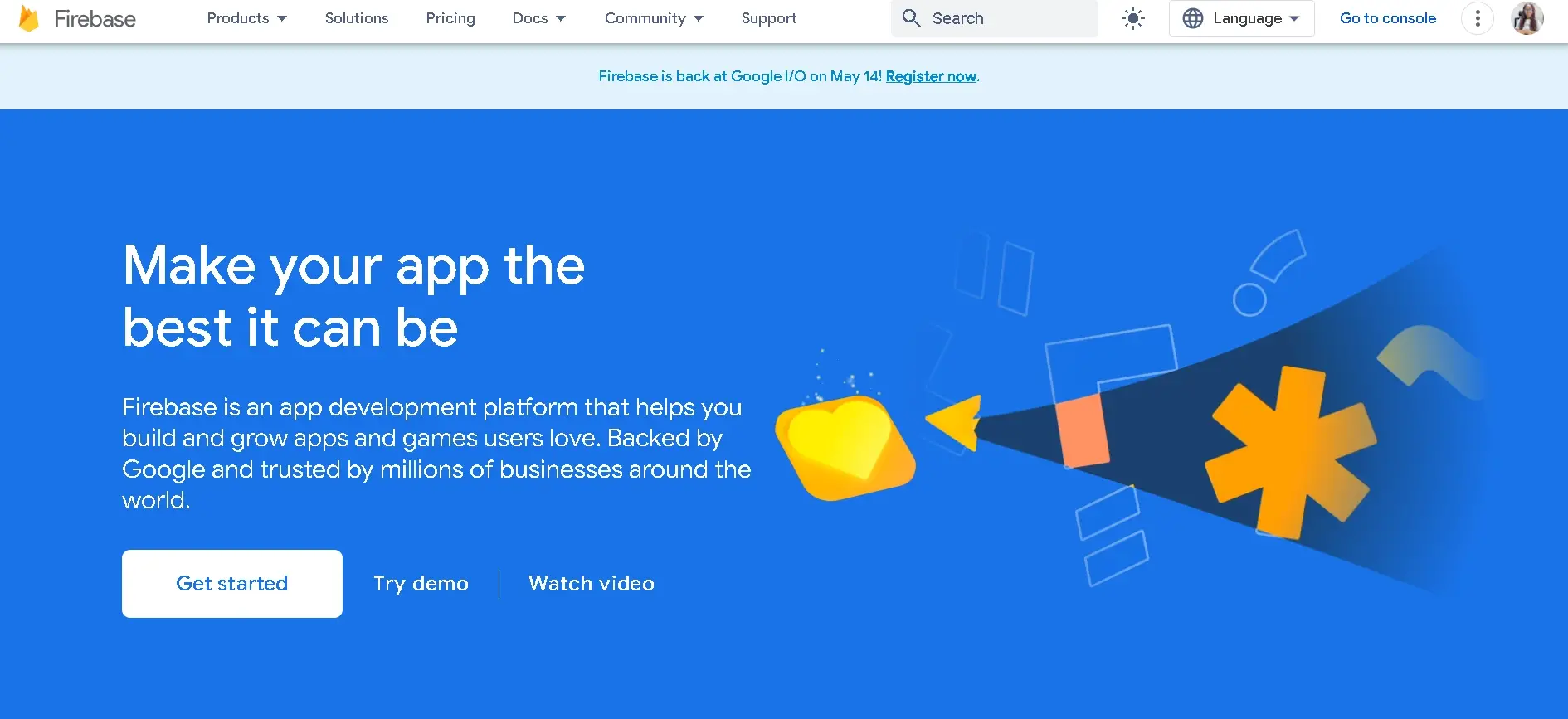
Firebase is a back-end-as-a-service platform provided by Google. It can be used to manage the backend of cross-platform applications. The database offers a real-time database hosted on the cloud.
Data is stored in JSON format, and is available in real-time to connected users. Some features of Firebase include; hosting, authentication, analytics, performance monitoring, cloud Firestore, etc.
Backendless
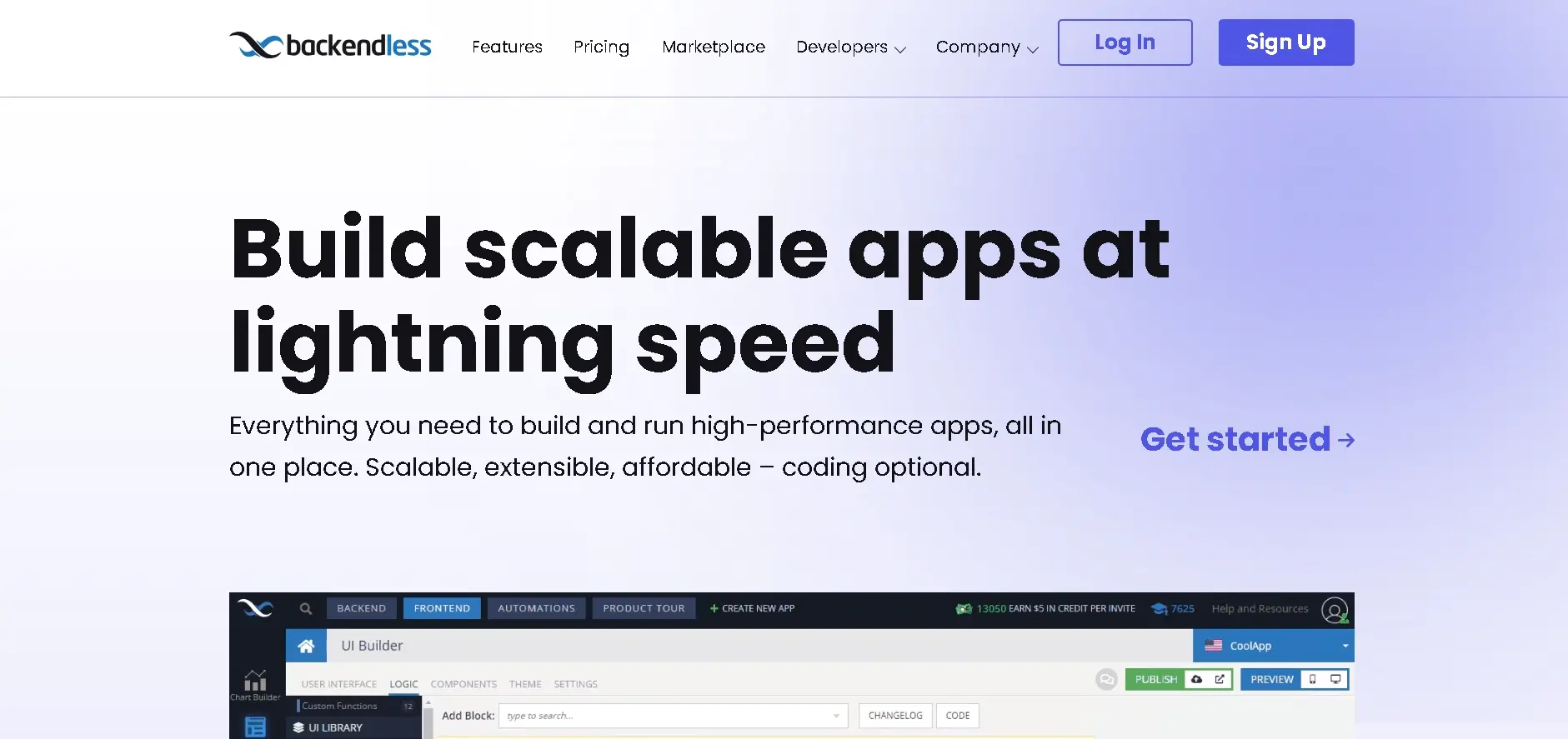
Backendless cloud-based service provides a platform that allows developers to integrate server-side functions with the front end of their applications, and UI builder to create beautiful user interfaces for apps and websites.
Features of Backendless include; real-time database, codeless logic and APIs, push notifications, UI builder, user management, data visualization, etc.
Other honorable mentions include;
- DirectUs
- Supabase
- CloudKit
- PocketBase
- Kinvey
Looking for the perfect hosting solution for your DirectUs projects? Explore our Directus Hosting plans, optimized for performance and scalability, to take your development to the next level.
Summary
Cloud-based solutions make managing and recovering data, security, data insights, and collaboration, easy.
The purpose of Backend-as-a-service is to allow developers to focus on the front-end part of their application while delegating the task of server administration, data management, and overall backend infrastructure to a vendor.
Backend-as-a-service helps reduce the development and market time of an application, it is cost-effective and allows businesses or developers to focus on the core business and front end of an application.
When choosing a backend-as-a-service platform, businesses or development teams must consider different features offered by the provider. Factors like security, scalability, industry regulatory compliance, performance insights, etc. should be considered.
Backend as a service is great for businesses and suits the majority of applications whether small scale or large scale. Overall Baas provides tools and services that help developers build apps easier and faster.
Frequently Asked Questions
How can managers foster TRM development in their employees?
Managers can foster TRM development in their employees by tailoring their management style to the employee's TRM level, providing training and skill development opportunities, assigning challenging tasks and projects, and empowering employees to make decisions.
How can I get assistance with my web development hosting account?
Our support team is available 24/7/365 to assist with your web development hosting account. You can contact us via live chat, email, or phone for any queries or concerns.
Can free HTML editors be used for professional web development?
Yes, free HTML editors like Visual Studio Code and Atom offer advanced features and are suitable for professional web development.
How does Verpex Web Development Hosting cater to developers' needs?
Verpex Web Development Hosting caters specifically to developers' needs by offering support for a wide range of programming languages, pre-installed development tools, and scalable resources to accommodate the growth of your project.

Jessica Agorye is a developer based in Lagos, Nigeria. A witty creative with a love for life, she is dedicated to sharing insights and inspiring others through her writing. With over 5 years of writing experience, she believes that content is king.
View all posts by Jessica Agorye





















